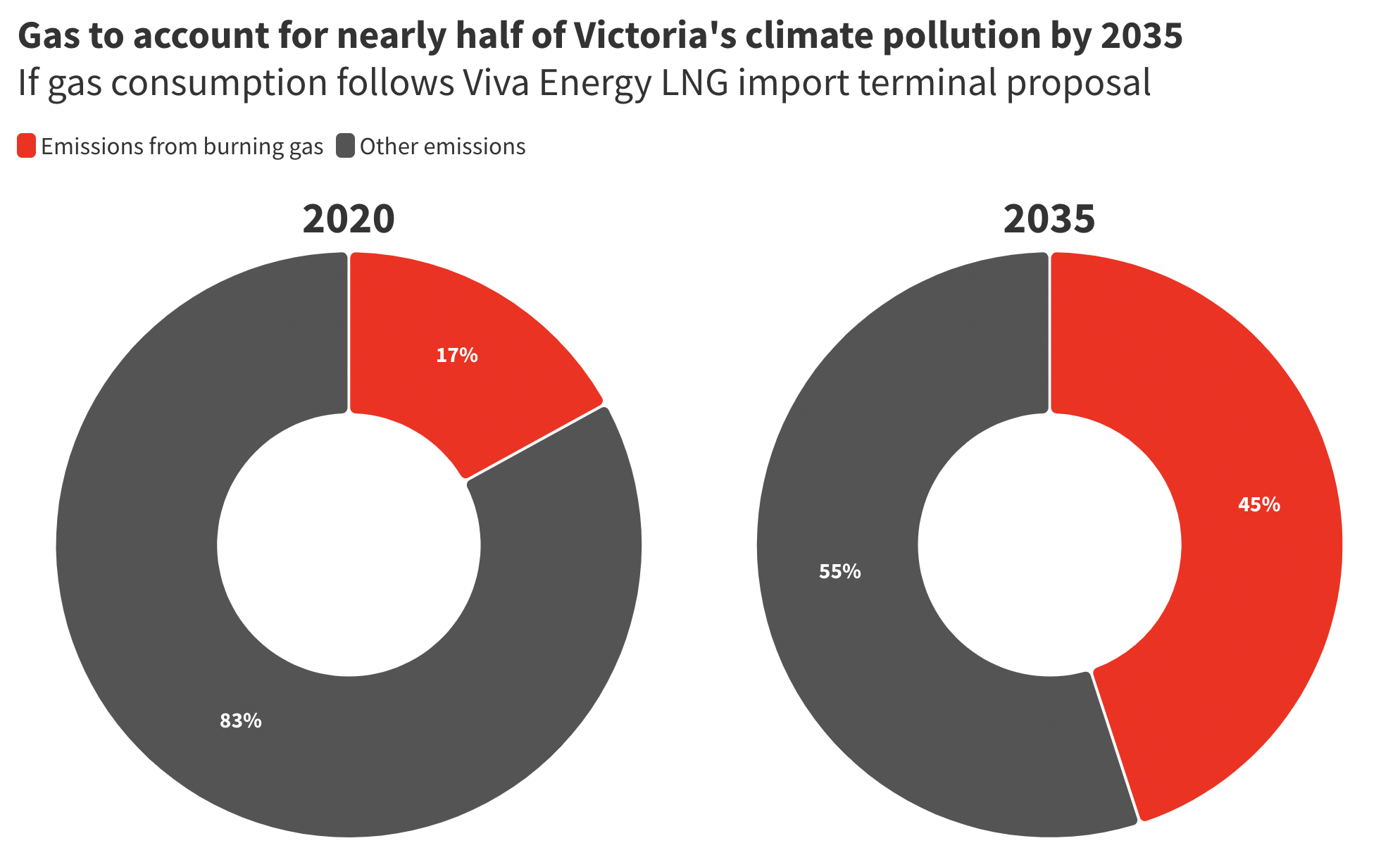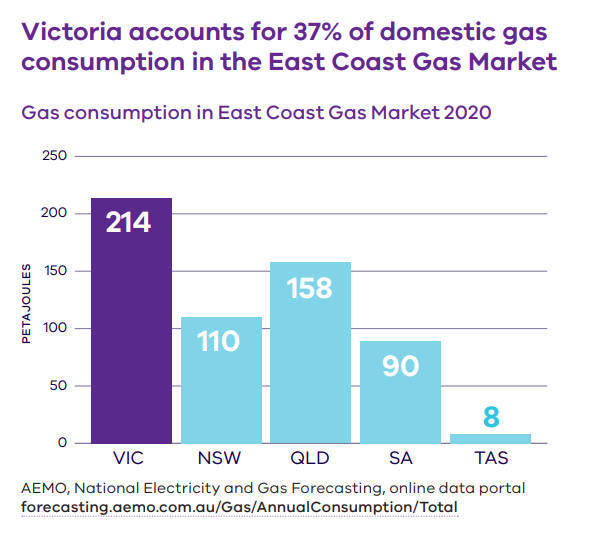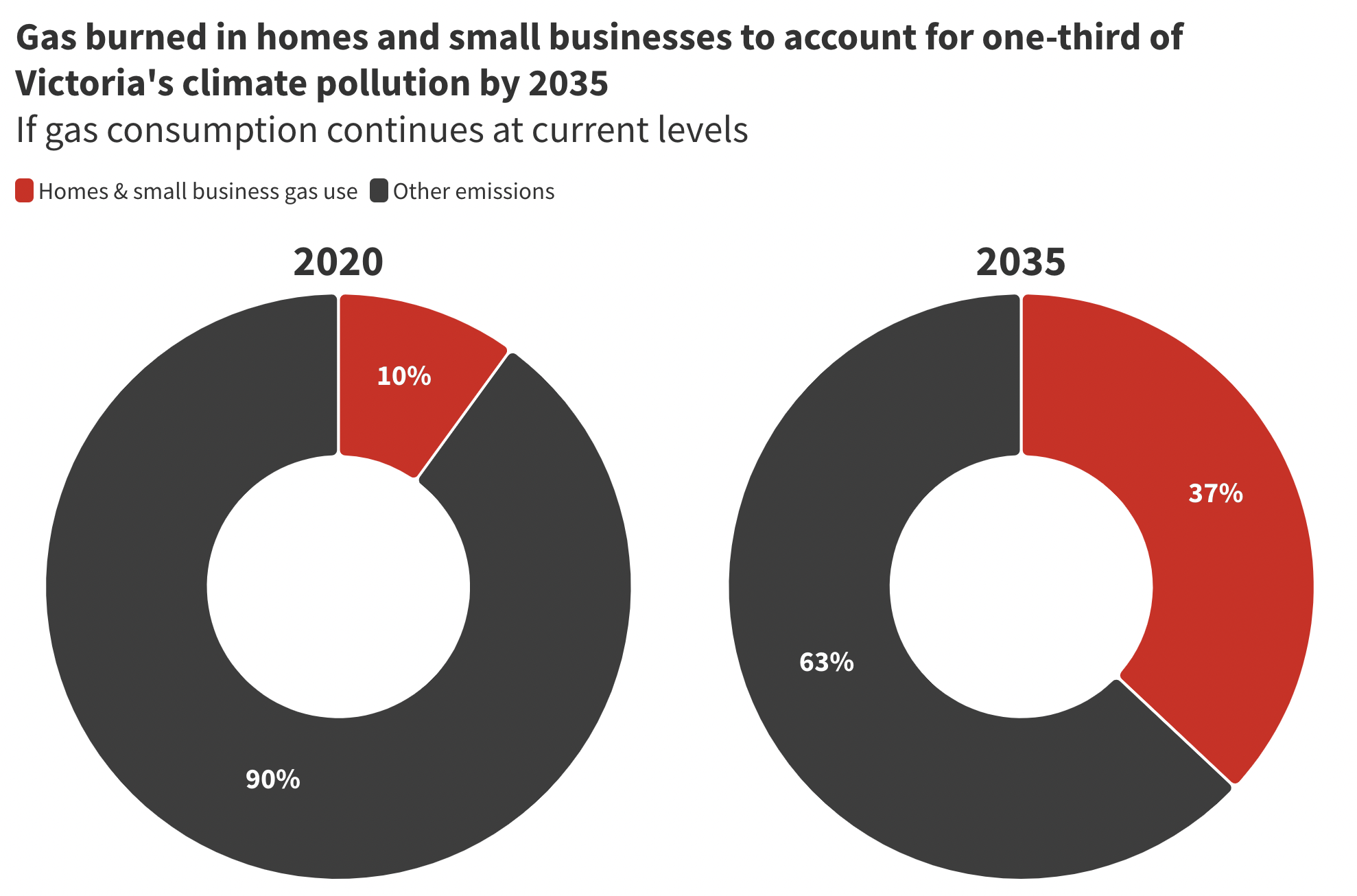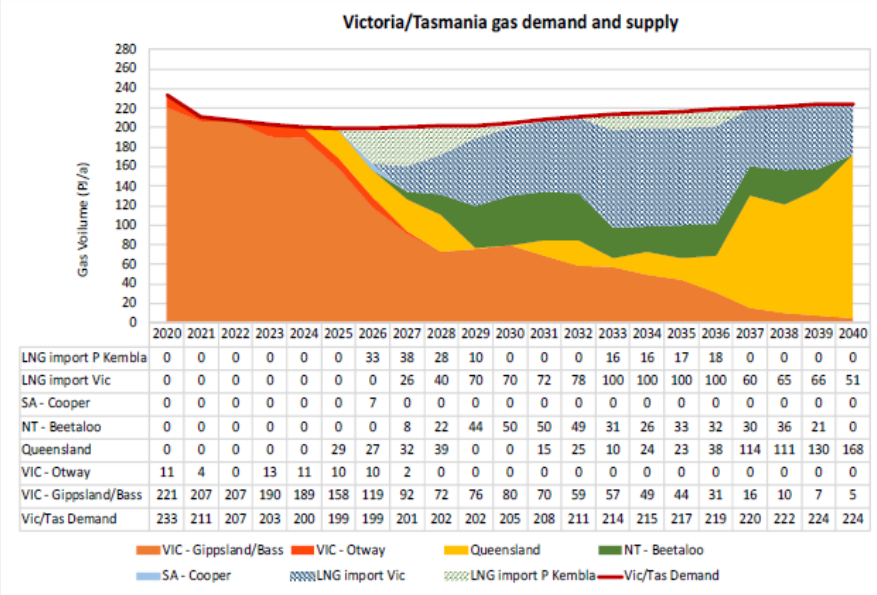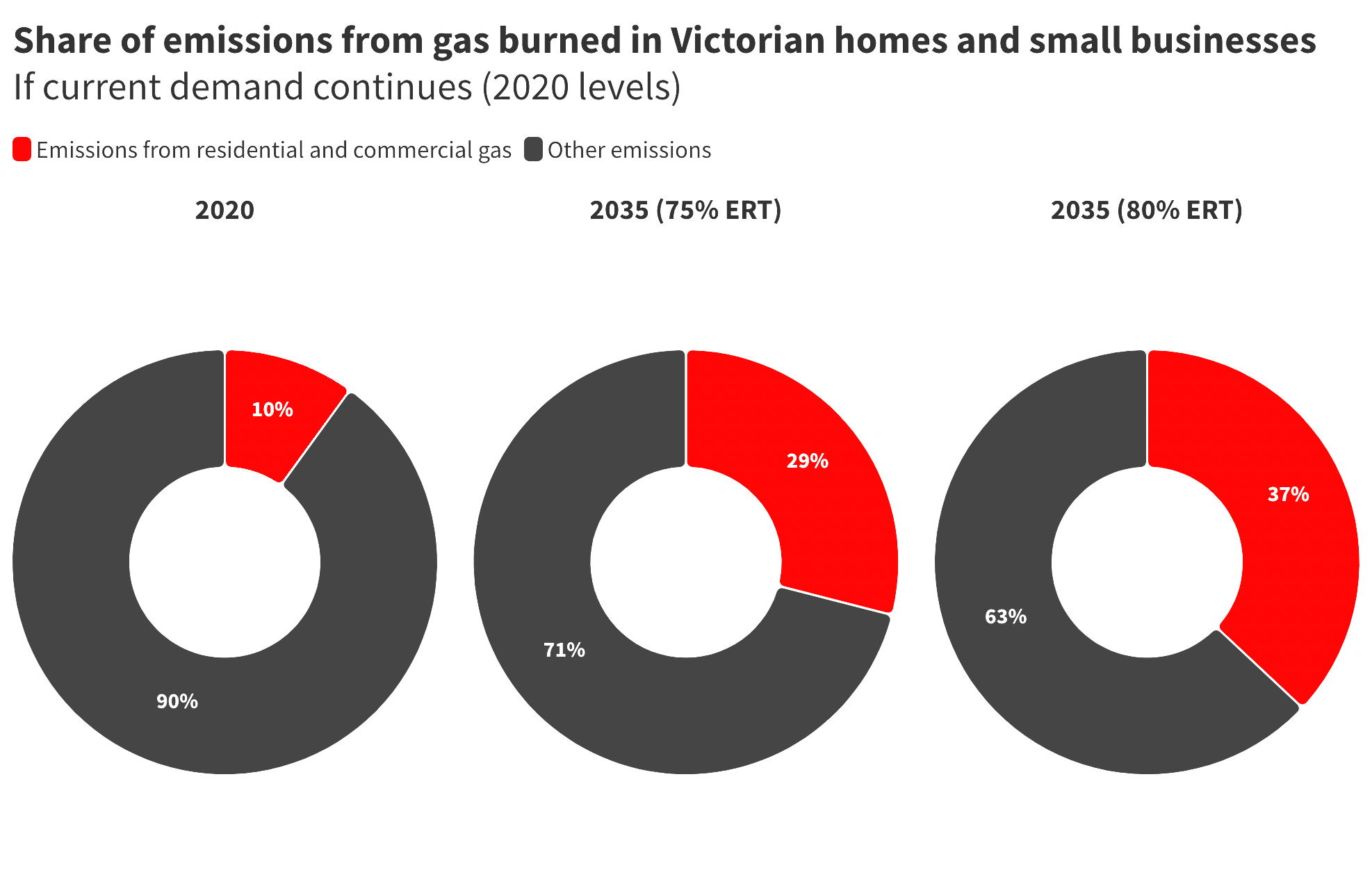What is the climate impact of gas?
Gas is mostly composed of methane, which has a global warming impact 75 times higher than carbon dioxide over a time period relevant to meeting international climate targets.
What’s more, methane emissions are rising fast. While carbon dioxide emissions are roughly 50% higher than in the pre-industrial era, methane is 150% higher.
At least 25% of today’s global warming is driven by methane from human activity. If methane leakage from gas exploration, extraction and distribution keeps increasing this percentage is expected to grow.
For a long time, the gas industry marketed gas as a ‘cleaner’ energy source than other fossil fuels, especially in Victoria where most of the electricity is generated by burning brown coal. This claim was based on the fact that gas produces significantly less carbon dioxide than coal during combustion for the power produced.
However, the rapid transition in Australia’s energy system coupled with technological breakthroughs has changed the facts underpinning this argument. Already 34% of Victoria’s electricity is generated by renewables and the government is aiming for 95% renewable energy by 2035. This means the electricity grid is becoming much cleaner. Electric appliances such as heat pumps are also much more efficient than gas heaters. The result is that heating homes and hot water with these super-efficient electric appliances powered by renewable energy can reduce emissions compared to using gas, even in Victoria.
Does this mean gas industry plans could threaten the Andrews government’s new climate targets?
If gas use continues at the current high levels, then it would be a serious threat to Victoria’s new 2035 climate targets. Gas would be responsible for up to 50% of the state’s emissions, which means the remaining sectors of the economy would have to cut pollution very sharply. We’d need to do further analysis, but we can say if these gas plans come to pass, it would be almost impossible for the government to cut emissions by 80% by 2035, which is the upper range of their target.
What will our emissions from electricity be in 2035?
The Andrews government has pledged to reach 95% renewable energy by 2035, which means the end of all coal-fired power in Victoria. This means the electricity grid will be much cleaner. Government modelling found emissions from electricity would drop from 41.7 million tonnes in 2020 to 5.9 million tonnes in 2035.
While switching from coal to renewables is a huge achievement, it’s not enough to meet Victoria’s climate targets. It would still leave an annual ‘emissions gap’ of between 18 and 24 million tonnes of pollution in 2035. Other sectors would need to cut emissions to fill this gap, so a plan to rapidly transition from gas to efficient electric appliances in Victorian buildings should be a priority action for government.
What about emissions from other sectors, like transport and agriculture?
Reaching net zero emissions will require all sectors of the economy to play a role. The transport sector has the same opportunities to cut emissions as the gas sector – switching from fossil fuels to electricity using renewable sources.
Most transport industry forecasts assume large-scale adoption of electric vehicles over the next decade. It is unheard of for industry forecasts to assume oil demand will remain flat over the next two decades, especially in Australia. Yet this is what industry forecasts are showing for gas, which is why we have exposed them in this report.
Other sectors such as agriculture do have many emissions reduction opportunities, but may need more time to deploy effective and affordable options to reduce their climate footprint.
Finally, the gas sector presents unique opportunities and challenges. On the one hand, the solution for most gas use is simple and readily available: help households switch to efficient electric appliances powered by renewable energy. On the other hand, there are serious barriers for people to switch, particularly the upfront costs for low-income households and renters. These are structural problems requiring considered government intervention.
Without the proper regulations and incentives, Victoria is unlikely to meaningfully reduce gas consumption levels. Transitioning away from gas will take a coordinated approach over the next decade – which is why it is urgent to address this sector.
Will these new climate targets affect Viva Energy’s proposal to build a gas import terminal?
Victoria’s new 2035 climate targets were announced after the Environment Effects Statement hearings had finished so they won’t be included in the report sent to the Minister. However, the Minister has ultimate discretion on whether or not to give this project the green light. We’re calling on the Planning Minister Sonya Kilkenny to take these new 2035 climate targets into account. The government should not be approving a gas terminal that will import enormous amounts of gas for decades, jeopardising the election pledge to cut emissions by 80% by 2035.
Why have you emphasised the upper range of Victoria’s climate targets?
Victoria’s new climates are expressed as a range: reducing emissions between 75 and 80% by 2035. The report shows gas emissions as a share of total emissions for both the lower and upper ends of this range. However, we believe the upper 80% emissions goal should be emphasised because it’s more closely aligned with calls from climate scientists for Australia to reach net zero emissions by 2035.
What about ‘biomethane’ and renewable gas?
Biomethane offers an important opportunity to reduce the carbon footprint of landfills, wastewater treatment centres and the dairy industry. Nevertheless, these sources are limited, reducing the potential of biomethane to supply a large volume of gas to Victoria. Biomethane is also several times more expensive than existing fossil gas, which in turn is more expensive than electricity, making it unaffordable as a total replacement.
The gas industry has been quick to promote another alternative, ‘green hydrogen’, also sometimes called renewable gas. Despite hydrogen holding some potential for high heat applications for industry, the reality is that hydrogen will be (following most estimates) far more expensive than electricity. Adopting hydrogen would require replacing around 90% of the gas network as the current pipelines would suffer embrittlement if hydrogen is transported at a concentration higher than 10%. Most gas appliances would also need to be replaced.
